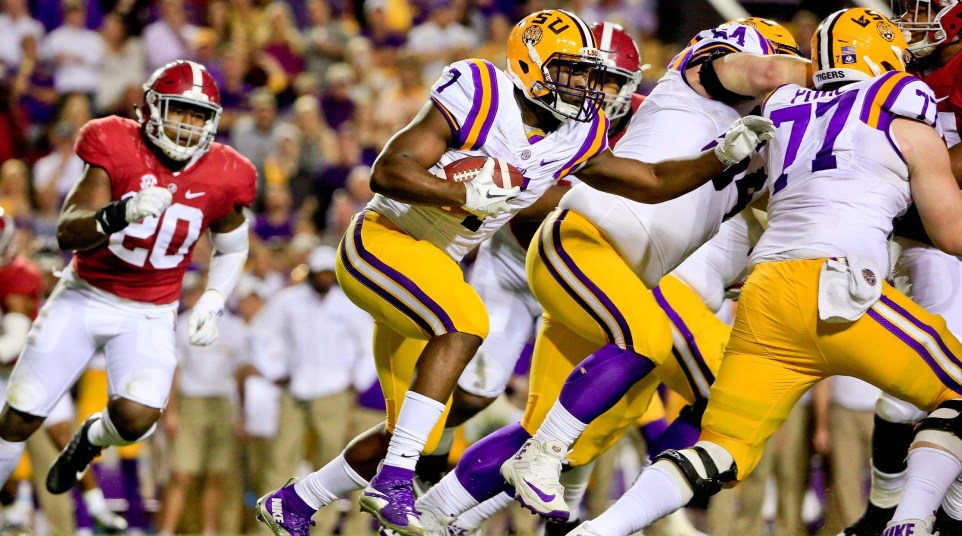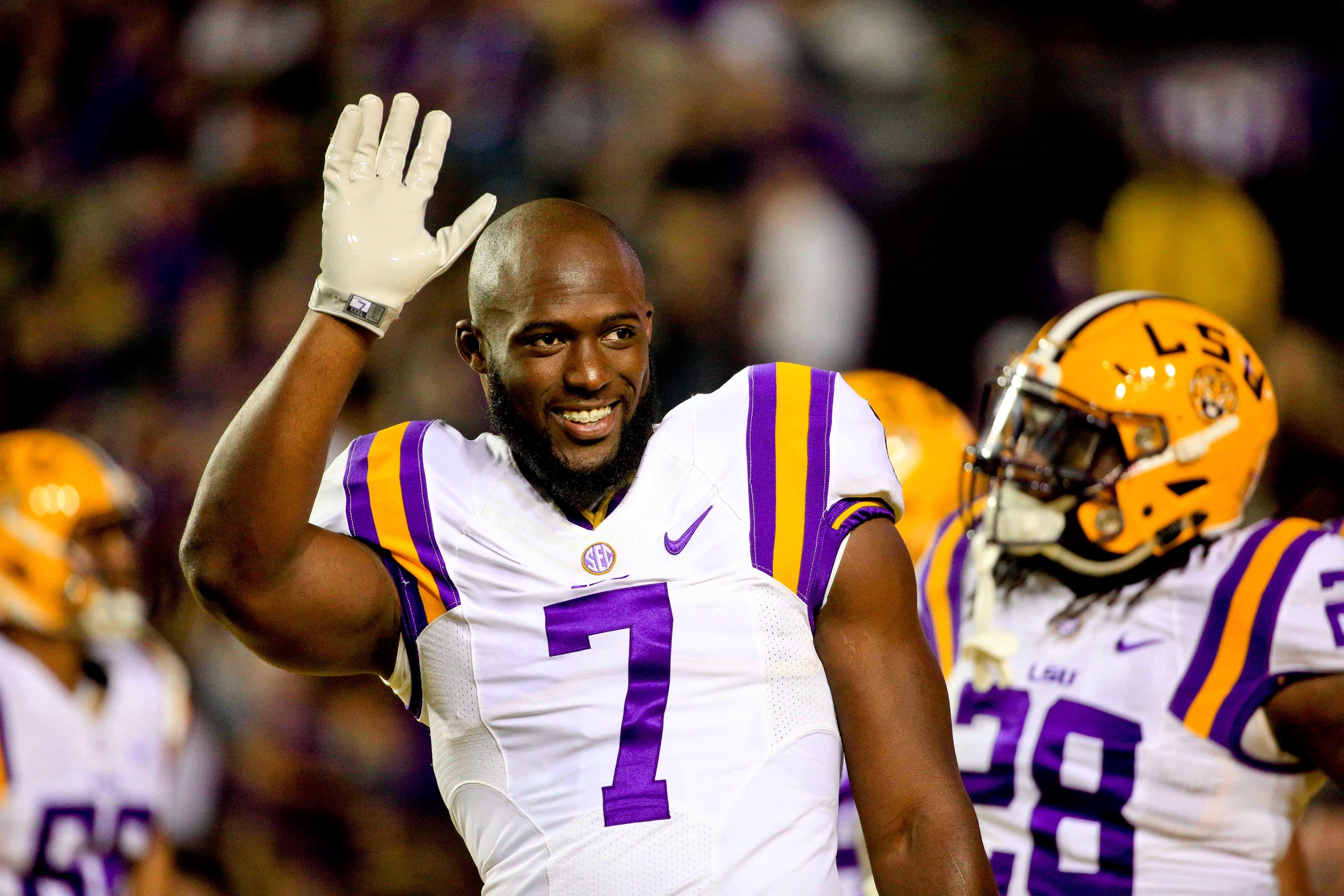
Leonard Fournette, learn a lesson from Adrian Peterson: Make your money now
LSU running back Leonard Fournette is destined to be a high first-round pick in the NFL Draft. Many scouts believe he’s another Adrian Peterson.
I’m assuming they mean the younger Adrian Peterson, because the older Adrian Peterson just had his option declined by the Minnesota Vikings. Exactly three weeks shy of his 32nd birthday, he’s a free agent and looking for work.
Peterson was taken No. 7 overall in the 2007 draft out of Oklahoma and almost immediately turned into one of the game’s premier backs. Three times he’s led the league in rushing, highlighted by a 2,097-yard effort in 2012 — only 8 yards shy of the all-time record held by Eric Dickerson — that earned him an MVP award.
Fournette is being graded similarly to Peterson coming out of college. More than likely, he’ll go in the Top 10.
Former Ohio State cornerback Eli Apple, who was chosen 10th overall last spring by the New York Giants, got a contract worth approximately $15 million in guaranteed money. Included was a signing bonus north of $9 million.
Those are the dollar figures Fournette can expect to see assuming he goes as high as he’s currently projected — perhaps even more. Don’t begrudge him if he holds out for every last nickel, too. Not only are professional careers shorter in the NFL than in other sports, but tailbacks turn over faster than any position.
While that first deal will be nice, Fournette needs to set his eyes on the second one. That’s when we start talking about generational wealth.
After Peterson rushed for 5,782 yards in his first four seasons, he was rewarded with a seven-year extension valued in the vicinity of $100 million. But only $36 million was guaranteed. The rest was essentially Monopoly money.
The option that the Vikings just declined was for $18 million — $11.75 million in salary, a $6 million roster bonus and a $250,000 workout bonus. Peterson will never receive a penny of that money from Minnesota. The only number that matters on NFL paper is the guaranteed portion. The rest is usually for headline-grabbing purposes.

Credit: Derick E. Hingle-USA TODAY Sports
Like Peterson did, Fournette battled injuries at the collegiate level. A bum ankle hampered him for most of his junior campaign.
Peterson broke a collarbone his last year in Norman. He also tore knee his knee in 2011 with the Vikings and missed most of this past season with more knee issues. But every time, he’s proven to be a world-class healer.
We’re yet to discover if Fournette has the same super-human body at his disposal. There were times in 2016 when he looked like the best runner in the country — just like all the experts predicted — yet others when he was clearly bothered by the ankle problem. Sitting him for the bowl game was the right thing to do for his future.
But Fournette would be wise to learn a lesson from Peterson: On Sunday, even generational talents can get treated like practice-squad fodder.
The Scouting Combine is this week in Indianapolis. Nobody doubts Fournette’s physical tools. He’ll also ace the interviews in all likelihood. What he needs to worry about is the medical examination. He must get a clean bill of health.
Assuming he gets one, Fournette will hear his name called early come April and be on his way to a productive — not to mention lucrative — career at the next level. He’s also already signed a big endorsement deal with Under Armour, so he’s doing a fine job of maximizing his earnings off the field, as well.
Still, he’ll end up on the NFL scrap heap one day, just like Peterson. Probably sooner than he thinks. The time for Fournette to cash in is now.
John Crist is the senior writer for Saturday Down South, a member of the FWAA and a voter for the Heisman Trophy. Send him an e-mail, like him on Facebook or follow him on Twitter.
